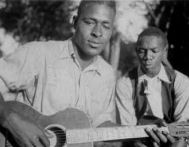Celebration of Negro Spirituals, Part Five
A series of speakers, primarily professors, open a symposium celebrating the history and impact of African-American spirituals.
A series of speakers, primarily professors, open a symposium celebrating the history and impact of African-American spirituals.
A series of speakers, primarily professors, open a symposium celebrating the history and impact of African-American spirituals. This presentation continues from the presentation "Celebration of Negro Spirituals, Part One."
A series of speakers, primarily professors, open a symposium celebrating the history and impact of African-American spirituals.
Freetown Village presents the history and culture of the approximately 3,000 free African Americans known to have been living in Indianapolis, Indiana in 1870. The content focus is on the Fourth Ward, which is Indianapolis' oldest African American settlement.
The village offers a summer camp for five through 14 year old children, interactive plays, spiritual music performances, and hands-on children's workshops. With the exception of the summer camp, all programs are available as outreach programming in Indiana and nearby states.

In 1939, John Lomax, Curator of the Library of Congress Archive of American Folk Song, and his wife Ruby Terrill Lomax, embarked on a 6,500-mile journey through the South. During their travels, they recorded more than 700 folk tunes that now are available as audio files on this website. Genres include ballads, blues, children's songs, cowboy songs, fiddle tunes, field hollers, lullabies, play-party songs, spirituals, and work songs.
The site also presents field notes containing personal information on some of the more than 300 performers the Lomaxes recorded, notes on geography and culture, and excerpts from correspondence. More than 50 letters to and from the Lomaxes, 380 photographs, a bibliography of 22 works, and a map are also offered. The site is keyword searchable and can be browsed by subject as well as title, song text, and performer.